The Role of the Aogula Fault in the Migration of Hydrocarbon Along the Sartu, Putaohua, and Gaotaizi Reservoirs and Its Relationship with Accumulation in the Songliao Basin
Abstract
1. Introduction
2. Geological Setting
3. Materials and Methods
3.1. Relevant Materials
3.2. Method for Determining the Location Where Faults Terminate the Migration of Hydrocarbon Along Sand Bodies
3.3. Method for Determining the Location of Vertical Diversion in Hydrocarbon Migration Along Sand Bodies Due to Faults
3.4. Method for Determining the Location of Lateral Diversion in Hydrocarbon Migration Along Sand Bodies Due to Faults
4. Results and Comparison
4.1. The Role of the Aogula Fault in Terminating the Migration of Hydrocarbon Along the S Reservoir and Its Relationship with Hydrocarbon Accumulation
4.2. The Location of Vertical Diversion Effect of the Aogula Fault on the Migration of Hydrocarbon Along the S, P, and G Reservoirs and Its Relationship with Hydrocarbon Accumulation
4.3. The Lateral Diversion Effect of the Aogula Fault on the Migration of Hydrocarbon Along the S, P, and G Reservoirs and Its Relationship with Hydrocarbon Accumulation
5. Discussion
6. Conclusions
Author Contributions
Funding
Data Availability Statement
Conflicts of Interest
References
- He, C.; Zhang, Y.; Ying, Y.; Hong, Y. A method for predicting fault-induced changes of hydrocarbon migration pathways along sand carrier beds and its application. Oil Gas Geol. 2023, 44, 1300–1307. [Google Scholar]
- Fu, G.; Zhao, K.; Han, X. Lateral distributary migration of hydrocarbon from fault to sand body in the Nan 1 formation of the Sudeerte area, and its relationship with hydrocarbon accumulation. Geophys. Prospect. Pet 2022, 61, 564–570. [Google Scholar]
- Sun, G. Structural Evolution and Fault-controlled hydrocarbon Accumulation Mechanism of Aogula Fault Zone in Songliao Basin. Spec. Oil Gas Reserv. 2024, 31, 45. [Google Scholar]
- Cao, Q.; Yang, J.; Wu, W. Methods of eroded strata thickness restoration in sedimentary basins and its advancement. China Pet. Explor. 2007, 12, 41. [Google Scholar]
- Wu, T.; Wu, C.; Qi, Y.; Yao, A.; Zhang, S.; Xu, Y.; Shi, J. Quantitative resumption method of stratum denudation thickness and its application in Junggar Basin: A case study on the Permian Lower Urho Formation in Block 8 of Karamay Oilfield. J. Paleogeogr. 2015, 17, 81–90. [Google Scholar]
- Yu, Y. Actions of Aogula Fault on the oil lateral migration in S, P and G oil reservoirs. Pet. Geol. Oilfield Dev. Daqing 2021, 40, 47–54. [Google Scholar]
- Fu, G.; Zhou, H.C. Role of Aogula Fault zone in hydrocarbon migration and accumulation in Daqing placanticline and its west. Spec. Oil Gas Reserv. 2006, 13, 40–44. [Google Scholar]
- Lei, M.; Cai, L.; Wang, X. Control of Aogula Fault on hydrocarbon migration in Songliao Basin. Pet. Explor. China 1999, 4, 24. [Google Scholar]
- Wang, Y. Favorable hydrocarbon transport sites of Aogula Fault and their influence on hydrocarbon accumulation pattern of S, P, and G reservoirss. Spec. Oil Gas Reserv. 2021, 28, 10. [Google Scholar]
- Liu, Y.; Lei, L. Hydrocarbon accumulation law of the second and third reservoirs in the western slope of Songliao Basin. Spec. Oil Gas Reserv. 2009, 16, 36–39. [Google Scholar]
- Sun, G.; Feng, Z.; Sun, X. Analysis of hydrocarbon accumulation characteristics in the northern section of the western slope of Songliao Basin. Geol. Sci. 2009, 44, 478–489. [Google Scholar]
- Meng, Q.; Bai, X.; Zang, W.; Fu, L.; Xue, T.; Bao, L. Accumulation and exploration of petroleum reservoirs in west slope of northern Songliao Basin, China. Pet. Explor. Dev. 2020, 47, 254–265. [Google Scholar] [CrossRef]
- Wu, K.; Guo, J.; Yao, W.; Liu, Q.; Liu, Y.; Liu, B. Analysis on the structure and accumulation differences of Hongche fault belt in Junggar Basin. Geol. Resour. 2019, 28, 57–65. [Google Scholar]
- Qi, R. Fault characterization and its influences on gas accumulation in the Eastern Haggin Banner of Ordos Basin. Spec. Oil Gas Reserv. 2019, 26, 58–63. [Google Scholar]
- Zhong, W.; Jiang, Y.; Zhang, S.; Wang, Y.; Zhang, Y.; Wu, K. Sealing Evaluation of Hongche Fault Zone in Cheguai Area, Junggar Basin, Northwest China. Xinjiang Geol. 2019, 37, 368–372. [Google Scholar]
- Yin, J.; Wei, L.; Fan, C.; Xu, C.; Man, Y.; Hu, D.; Hou, D. Oil origin and migration direction in Wushi sag, Beibuwan Basin, South China Sea. Mar. Pet. Geol. 2022, 145, 105848. [Google Scholar] [CrossRef]
- Yang, C.; Zhuang, J.; Zhang, R.; Yang, H.; Zhang, S. Quantitative Evaluation of Fault Sealing Property in Kongqueting Area of Xihu Sag, East China Sea. Offshore Oil 2023, 43, 7–11. [Google Scholar]
- Jiang, Q.; Yong, L.; Jian, W.; Wan, M.; Qing, H. Controlling factors of multi-source and multi-stage complex hydrocarbon accumulation and favorable exploration area in the Hongche fault zone, Junggar Basin. Nat. Gas Geosci. 2023, 34, 807–820. [Google Scholar]
- Fu, X.; Wang, P.; Seng, J.; Fu, G.; Lv, Y. Migration and accumulation of oil and gas in a simple slope area: A case study on the Wastern Slope of the Northern Songliao Basin. Geol. Rev. 2006, 52, 523–531. [Google Scholar]
- Zhang, W.; Yang, Y. Study on oil and gas source and migration of Western slope area in northern Songliao Basin. Pet. Geol. Oilfield Dev. Daqing 2005, 24, 17–22. [Google Scholar]
- He, X.; Du, Y.; OuYang, J. Study on the controlling effect of faults on natural gas accumulation in the central uplift zone of Qiongdongnan Basin. Fault-Block Oil Amp 2024, 7, 36–50. [Google Scholar]
- Cao, L.; Yang, D.; Li, X.; Yu, Z.; Li, J.; Mao, C. Prediction method and application of lateral migration area of hydrocarbon along sandstone about transport fault. Energy Environ. Prot. 2019, 41, 44–50. [Google Scholar]
- Fu, G.; Han, X. Methodology for predicting transfer position of hydrocarbon transmission from fault in depression to sand body in slope area. J. China Univ. Pet. Ed. Nat. Sci 2021, 45, 42–50. [Google Scholar]
- Fu, Z. Prediction method and its application for active fault preventing locations of hydrocarbon transport in sand bodies during accumulation period. Pet. Geol. Oilfield Dev. Daqing 2023, 42, 37–44. [Google Scholar]
- Zhang, J. Prediction Method of the Distribution Position of hydrocarbon Transporting Form from Oil Source Fault to Sand Body:A Case Study of Sha-1 Lower Submember of Gangdong Fault in Qikou Area. J. Jilin Univ. (Earth Sci. Ed.) 2023, 53, 1352–1361. [Google Scholar]
- Tan, K.; Wei, P.; Lv, X.; Mou, Z. Research and application of quantitative recovery method of stratigraphic paleo-thickness-Taking Ludong area of Junggar Basin as an example. Nat. Gas Geosci. 2005, 48–50+59+9. [Google Scholar]
- Green, F.P.; Duddy, R.I.; Japsen, P. Multiple episodes of regional exhumation and inversion identified in the UK Southern North Sea based on integration of palaeothermal and palaeoburial indicators. In Petroleum Geology Conference Series; Geological Society: London, UK, 2018; pp. 47–65. [Google Scholar]
- Shao, X.; Liu, Z.; Cui, W. Restoration of the paleo-burial depth of strata in a sedimentary basin. Pet. Explor. Dev. 1999, 53-55+5+13. [Google Scholar]
- Fu, X.; Sun, B.; Wang, H. Quantitative characterization of fault segmentation growth and its application in hydrocarbon accumulation research. J. China Univ. Min. Technol. 2015, 44, 271–281. [Google Scholar]
- Fan, Y.; Xiang, C.; Yang, S. Hydrocarbon Accumulation Characteristics of the Perdido Fold Belt, Burgos Basin, Gulf of Mexico—A Comparison Between the Central and Eastern Regions. Energies 2025, 18, 1834. [Google Scholar] [CrossRef]
- Fu, G.; Li, S. Restoration Method and Application of the Sealing Evolution History of Mudstone Caprocks Damaged by Faulting. Earth Sci. 2017, 42, 1590–1598. [Google Scholar]
- Huang, H.; Luo, Q.; Wang, C.; Jiang, X.; Zhu, Z. Restoration of Mesozoic erosion thickness in the west of northern margin of Qaidam Basin and its geological significance. Pet. Explor. Dev. 2006, 44–48. [Google Scholar]
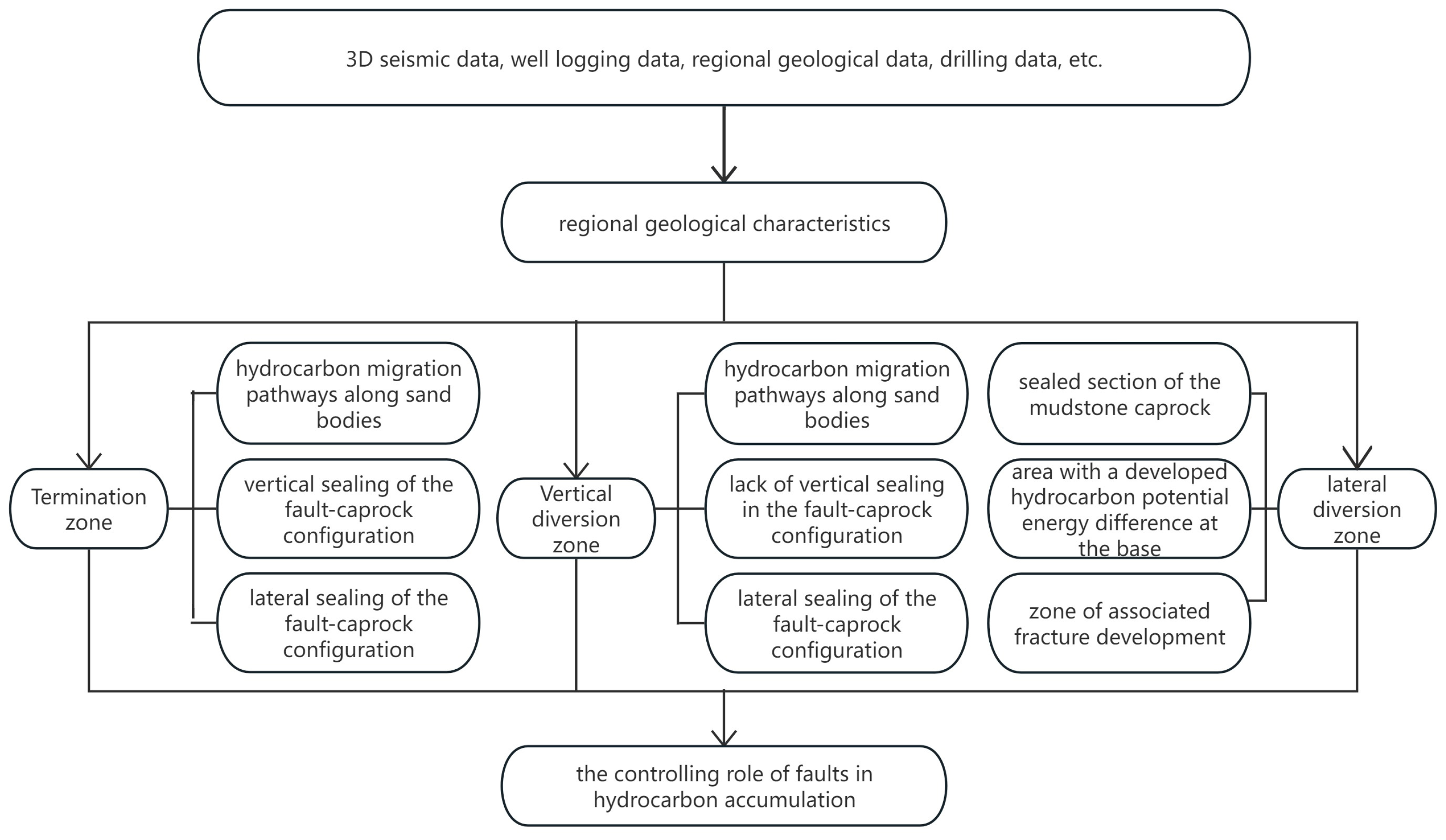
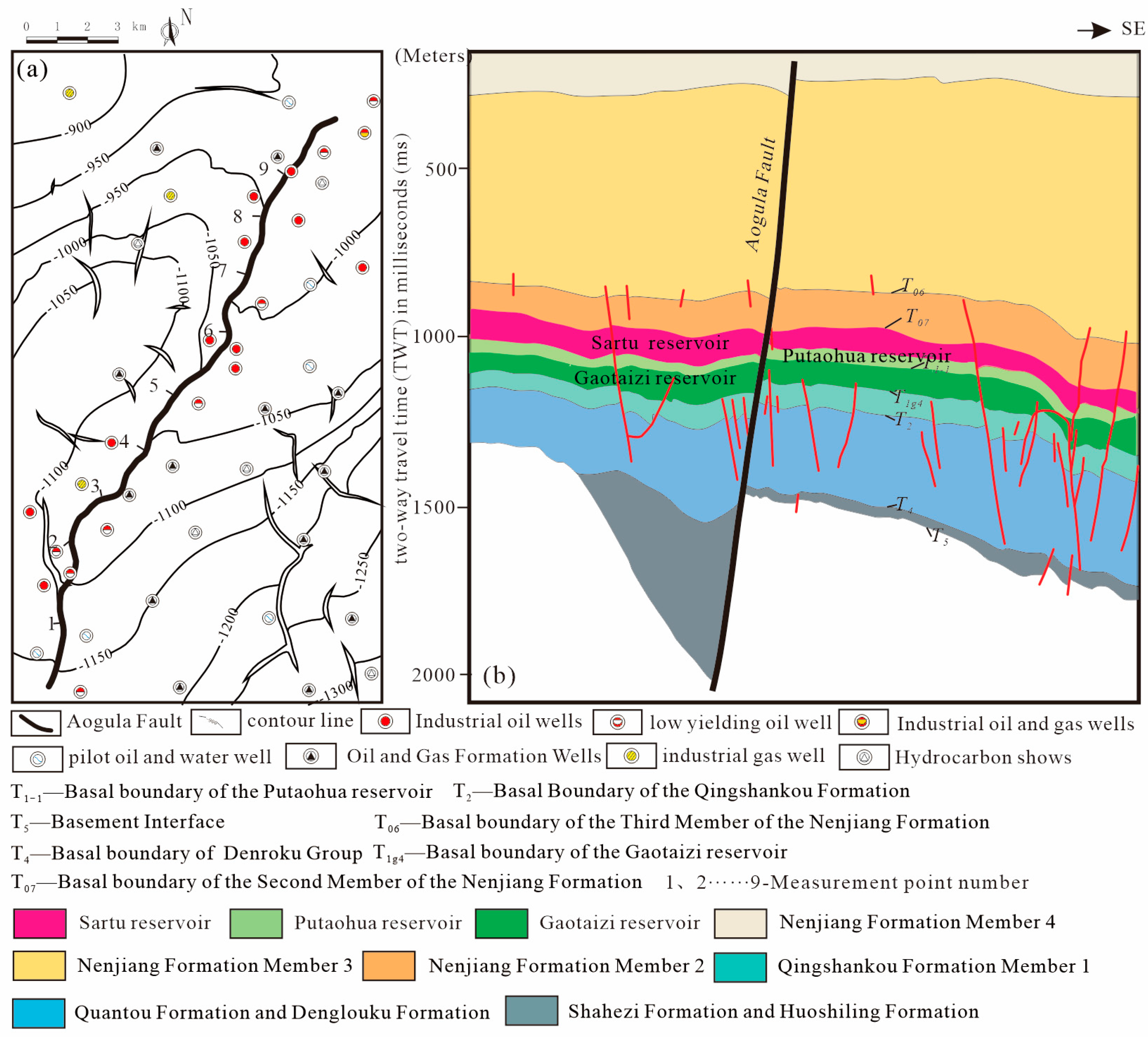
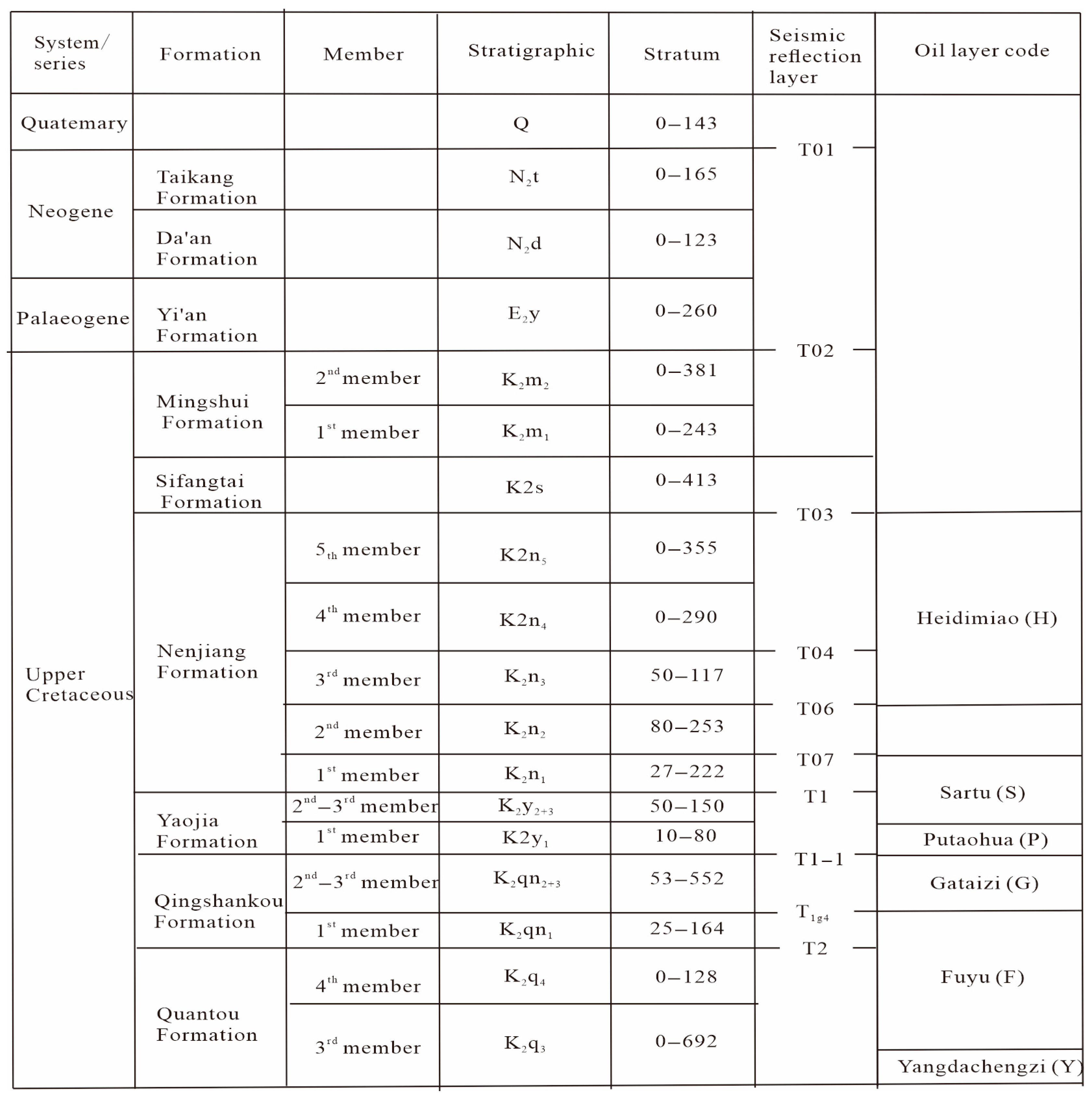
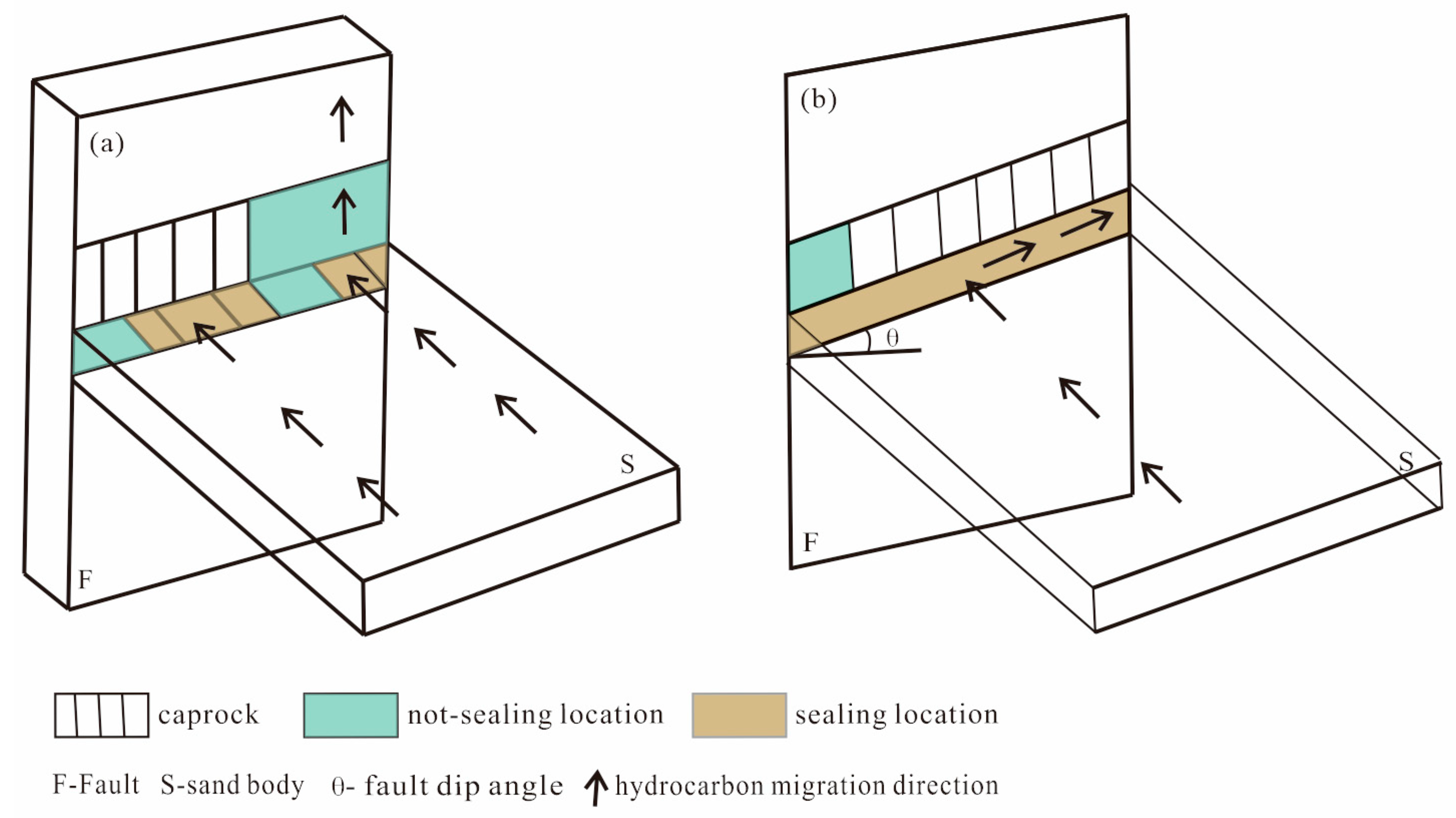
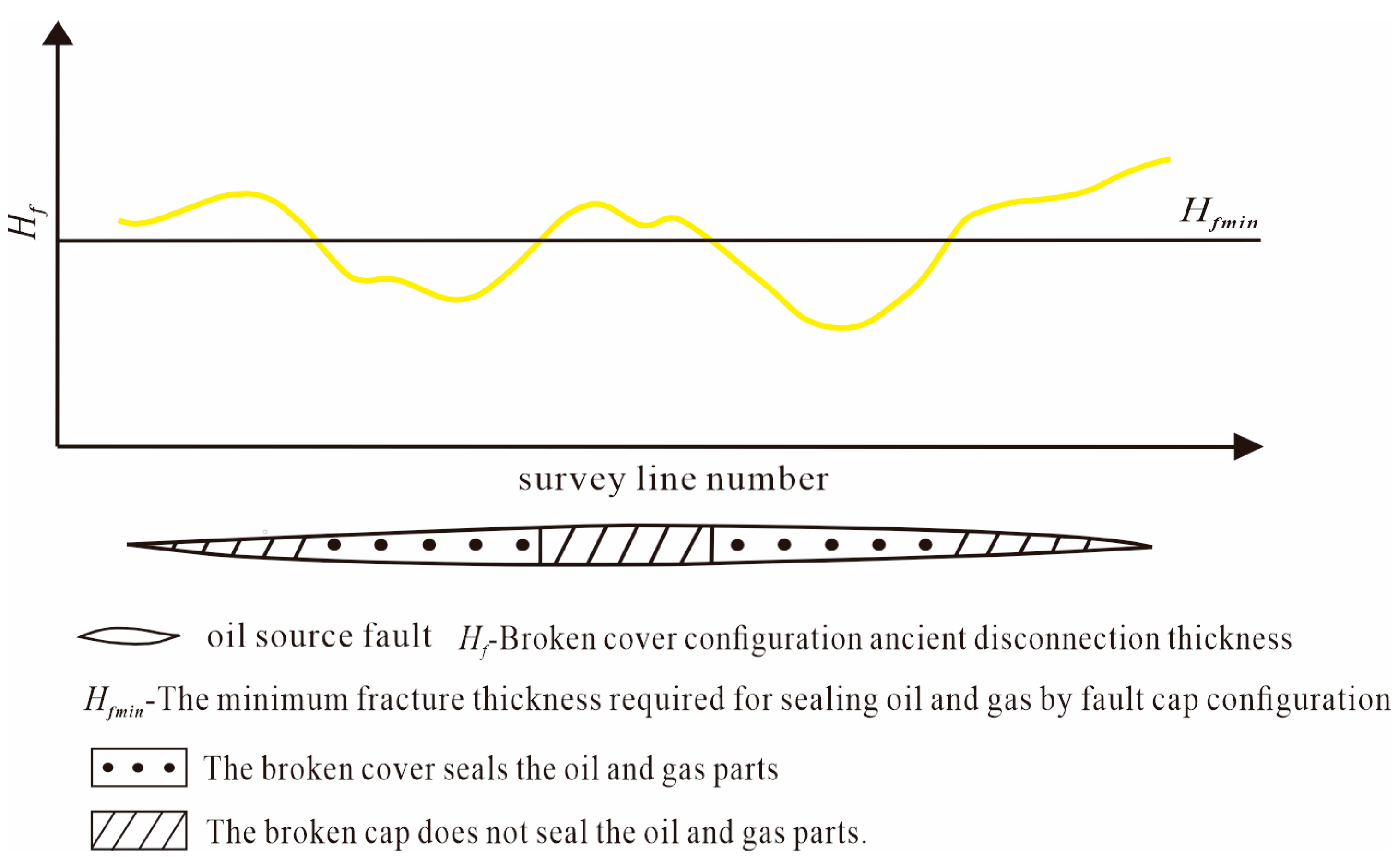
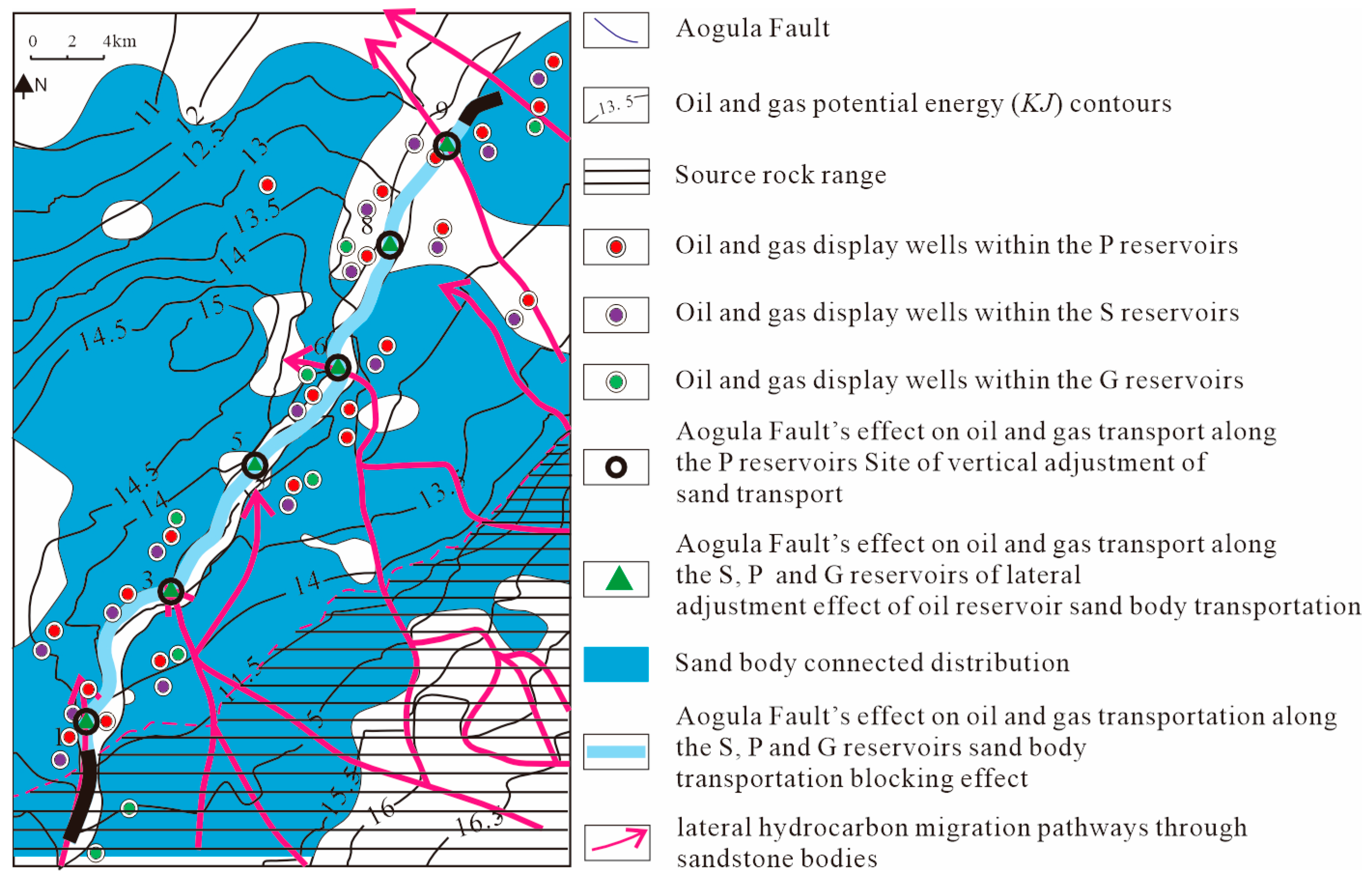
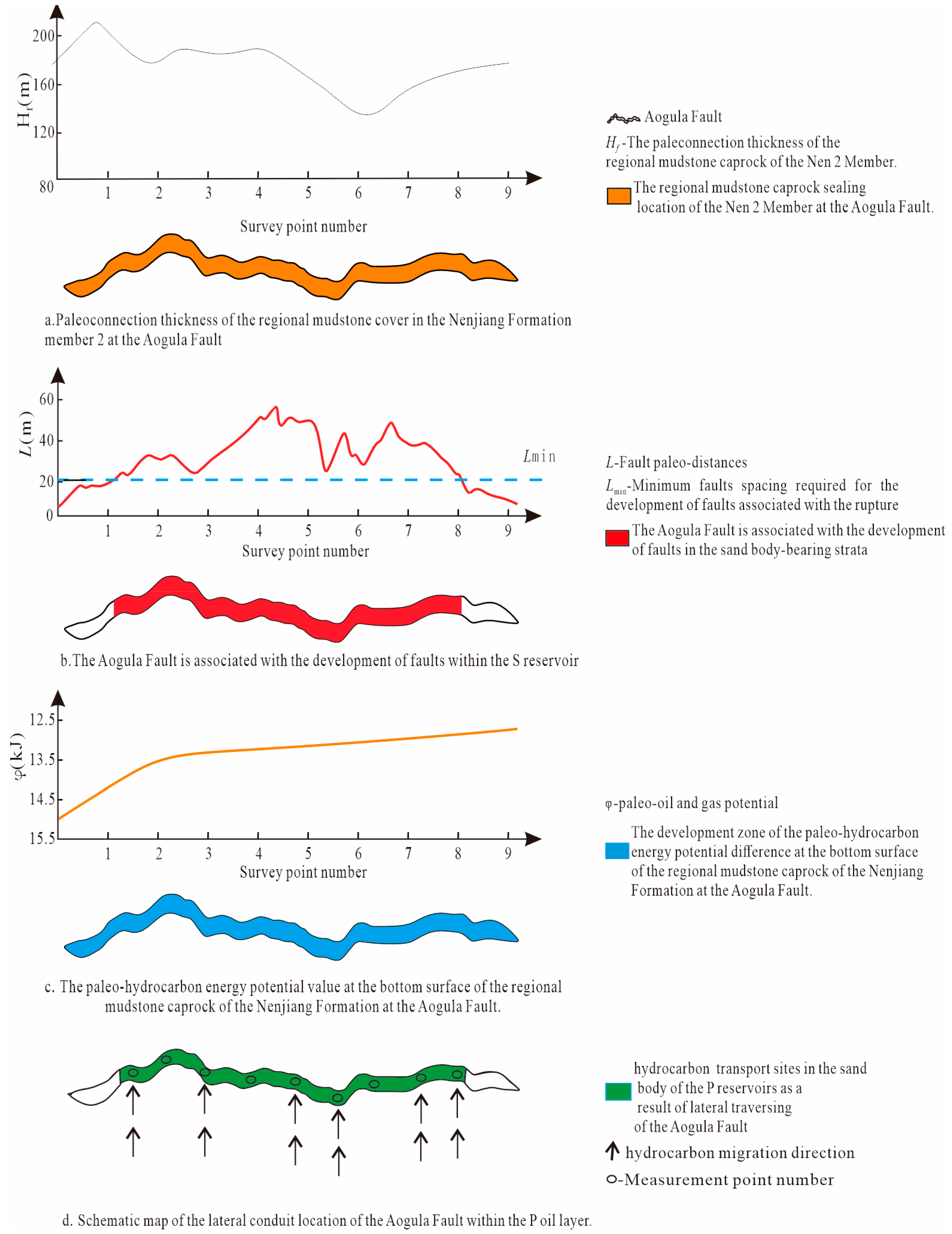
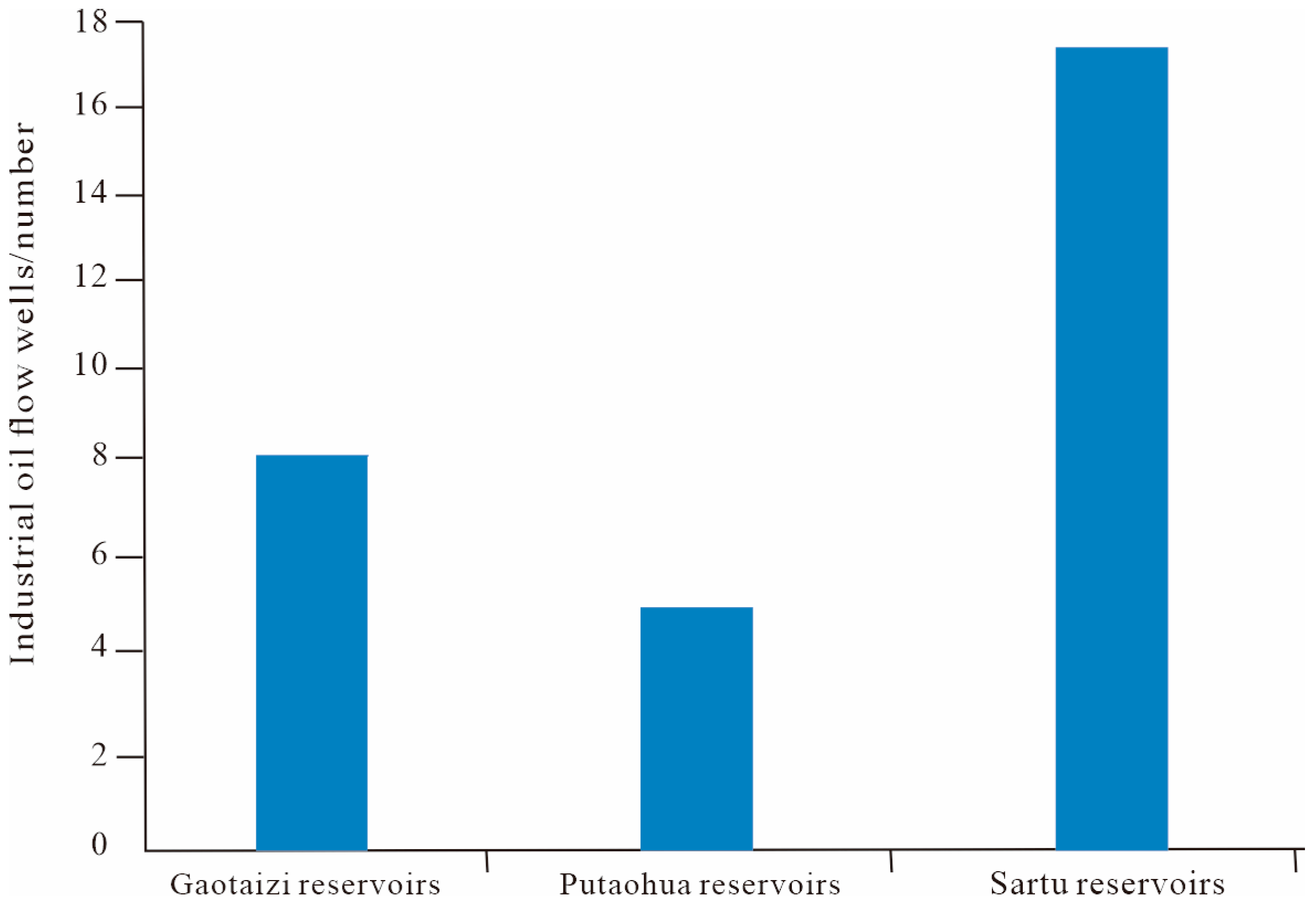
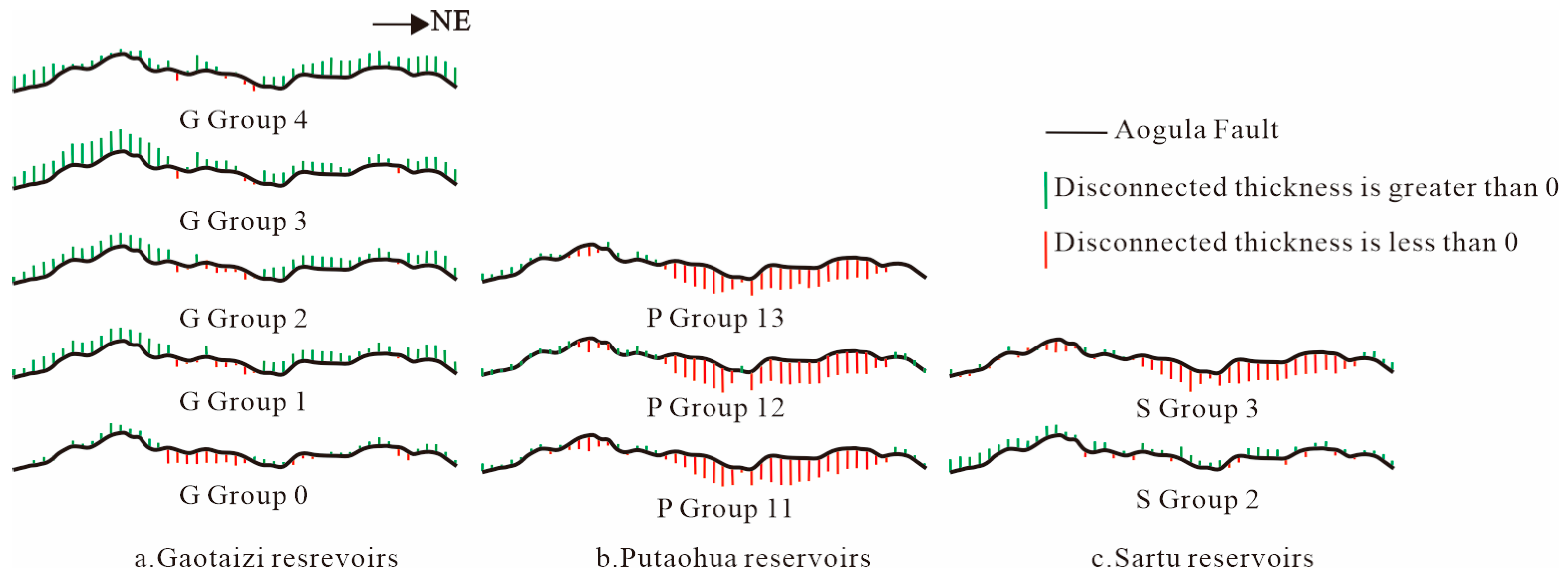
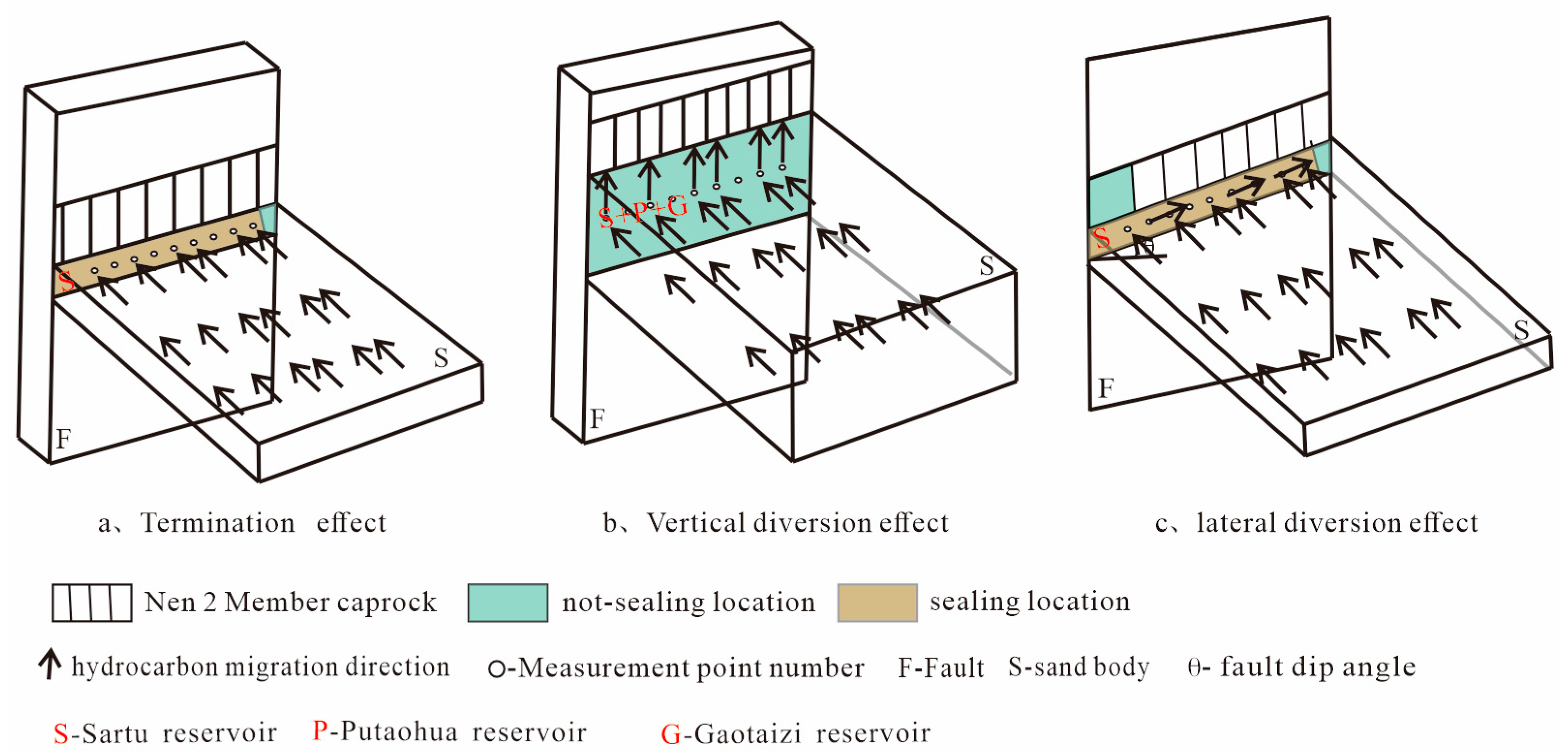

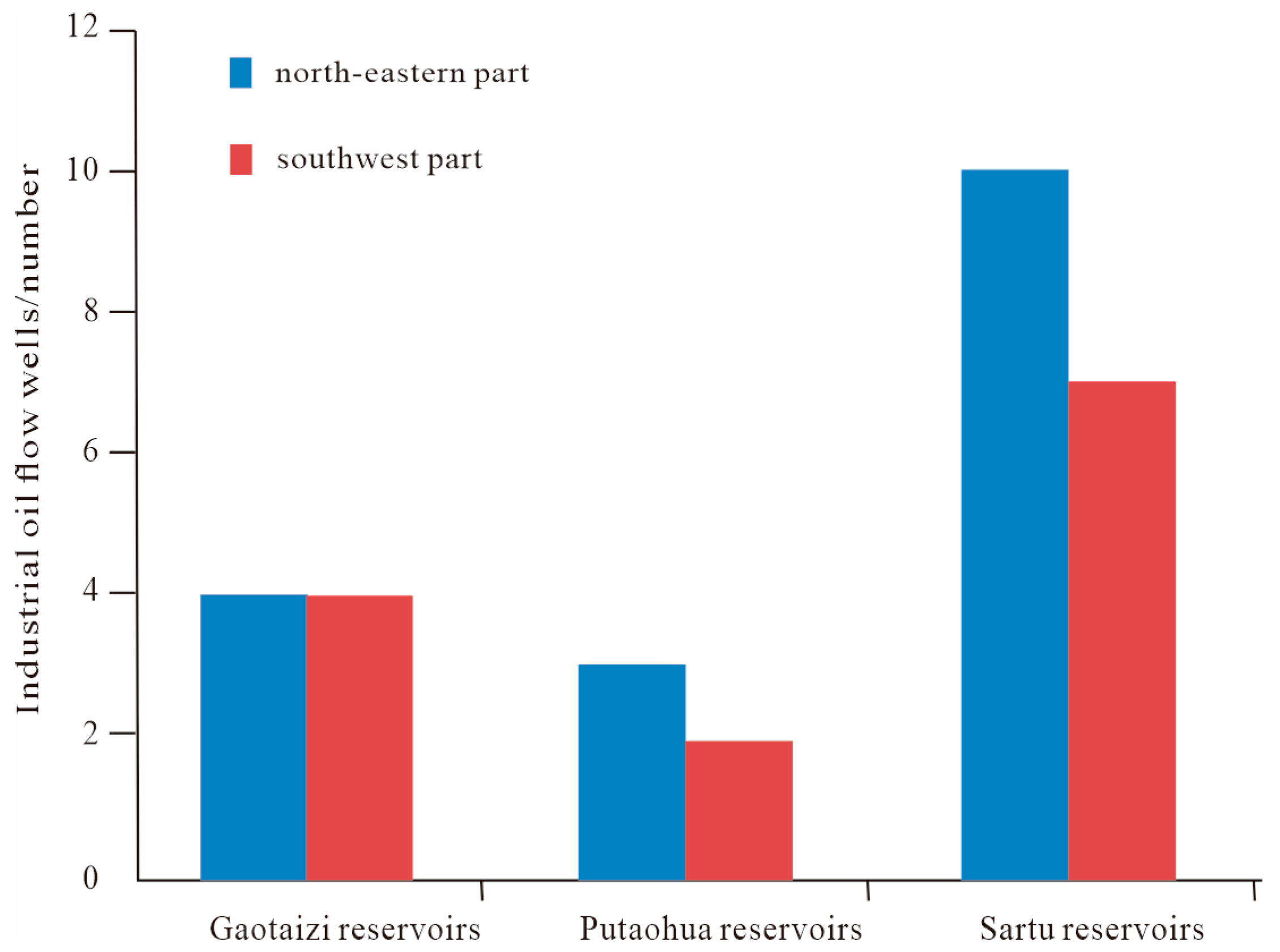
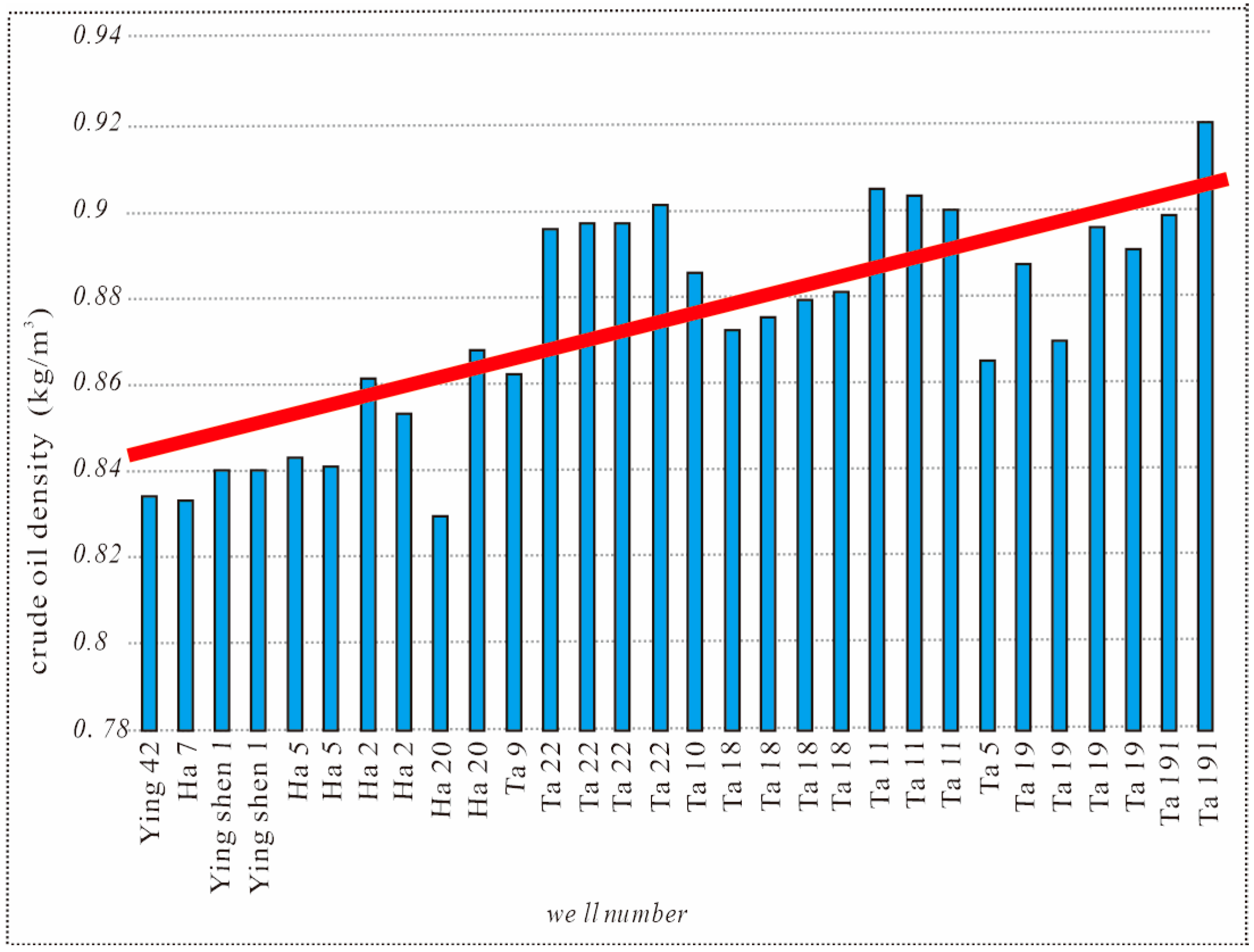
Disclaimer/Publisher’s Note: The statements, opinions and data contained in all publications are solely those of the individual author(s) and contributor(s) and not of MDPI and/or the editor(s). MDPI and/or the editor(s) disclaim responsibility for any injury to people or property resulting from any ideas, methods, instructions or products referred to in the content. |
© 2025 by the authors. Licensee MDPI, Basel, Switzerland. This article is an open access article distributed under the terms and conditions of the Creative Commons Attribution (CC BY) license (https://creativecommons.org/licenses/by/4.0/).
Share and Cite
Li, X.; Yang, L.; Sun, L.; Liu, J.; Li, G.; Cai, Z.; Hu, B.; Du, Y.; Zhang, B.; Jiang, F.; et al. The Role of the Aogula Fault in the Migration of Hydrocarbon Along the Sartu, Putaohua, and Gaotaizi Reservoirs and Its Relationship with Accumulation in the Songliao Basin. Energies 2025, 18, 4325. https://doi.org/10.3390/en18164325
Li X, Yang L, Sun L, Liu J, Li G, Cai Z, Hu B, Du Y, Zhang B, Jiang F, et al. The Role of the Aogula Fault in the Migration of Hydrocarbon Along the Sartu, Putaohua, and Gaotaizi Reservoirs and Its Relationship with Accumulation in the Songliao Basin. Energies. 2025; 18(16):4325. https://doi.org/10.3390/en18164325
Chicago/Turabian StyleLi, Xiaomei, Liang Yang, Lidong Sun, Jiajun Liu, Guozheng Li, Zhuang Cai, Bo Hu, Ying Du, Bowei Zhang, Fei Jiang, and et al. 2025. "The Role of the Aogula Fault in the Migration of Hydrocarbon Along the Sartu, Putaohua, and Gaotaizi Reservoirs and Its Relationship with Accumulation in the Songliao Basin" Energies 18, no. 16: 4325. https://doi.org/10.3390/en18164325
APA StyleLi, X., Yang, L., Sun, L., Liu, J., Li, G., Cai, Z., Hu, B., Du, Y., Zhang, B., Jiang, F., Zhang, J., & Wu, Q. (2025). The Role of the Aogula Fault in the Migration of Hydrocarbon Along the Sartu, Putaohua, and Gaotaizi Reservoirs and Its Relationship with Accumulation in the Songliao Basin. Energies, 18(16), 4325. https://doi.org/10.3390/en18164325





